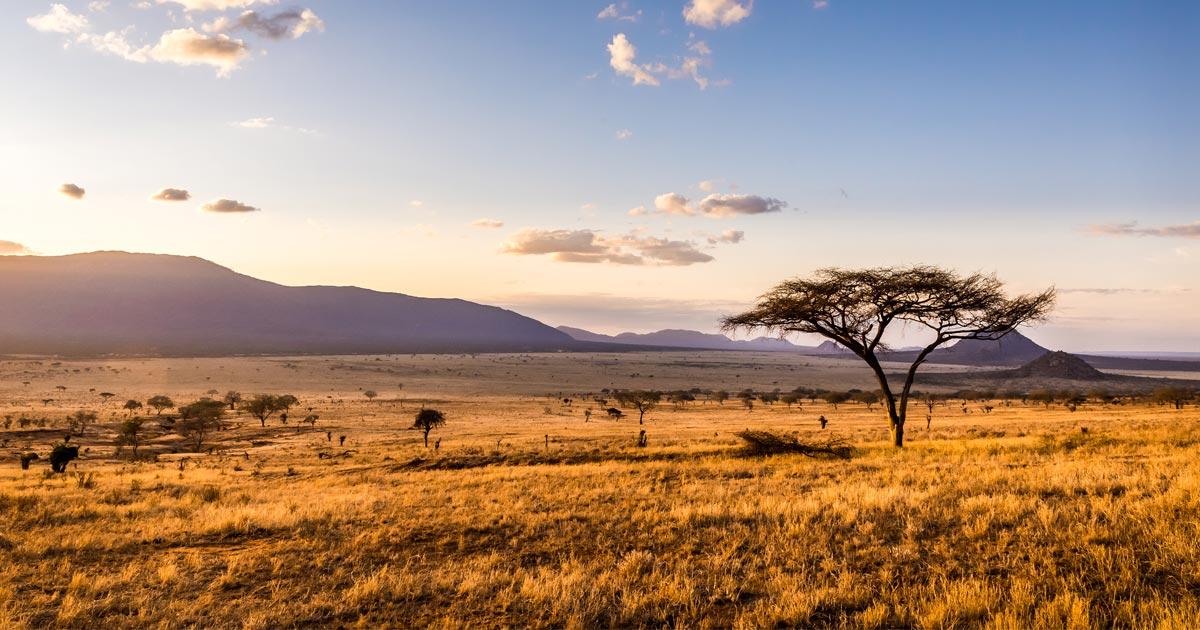
Why Africa’s Geography Is a Barrier to Growth
Browsing through history, we can identify several examples of states overcoming the hurdles of geography to achieve great feats. Though the plague of an inhospitable geography is not an insurmountable obstacle to development, it remains crucial to understanding disparities in income across countries. However, some mainstream economists place a premium on institutional development as a panacea for economic growth. Institutions are indeed important, but the legacy of geography still lingers.
Compared to the rest of the world, economic growth in Africa has been quite sluggish. A stunning fact is that during 1965–90, GDP (gross domestic product) per capita growth in Africa averaged 0.8 percent per year. Yet growth in the seven fastest-growing developing countries outside the region averaged 5.8 percent, and growth in the rest of the developing world recorded an average growth of 1.8 percent. Economic decline was so dramatic that the average 1972 GDP level was not attained again until 2004.
Economists admit that exploring Africa’s lackluster performance requires a multidimensional approach. However, many argue that geography is a major contributor to Africa’s anemic performance. According to a landmark study by Sachs and Warner (1997), countries in tropical regions grow more slowly than countries in temperate environments, and unfortunately, a sizeable proportion of the African population is in tropical climates.
Relative to temperate zones, tropical countries encounter a litany of parasitic diseases that are less pervasive in the former. Furthermore, as Austin (2008) reports, such places are also characterized by fragile soils. When combined, these features greatly inhibit agriculture productivity in tropical climates. To some onlookers, the negative implications of a hostile environment may not seem obvious, but studies show that the consequences for development are enormous.
Economic analysis suggests that after accounting for initial poverty, economic policy, and tropical location, among other variables, countries with intensive malaria grew 1.3 percent less per person per year, but a 10 percent reduction in malaria increased growth by 0.3 percent. Malaria is one of several diseases responsible for limiting the dynamism of African economies through its adverse impact on working hours by lowering life expectancy.
Similarly, adding to the burden of malaria is the TseTse fly. Marcella Alsan in a 2012 paper singled out this insect as an impediment to development in Africa. Alsan contends that the TseTse Fly restricted the capacity of Africans to generate an agricultural surplus by historically limiting the use of domesticated animals and impeding the adoption of animal-powered devices. By undermining the potential of livestock, the TseTse fly made it difficult for capital-intensive agriculture to emerge in Africa.
Estimates indicate that the typical African country would be 30 percent richer had the fly not impacted the quality of institutions. Moreover, recent research posits that the TseTse fly continues to affect the development of modern finance in Africa. Jianfu An and Wenxuan Hou in a 2017 paper argue that because of the TseTse fly some parts of Africa failed to harness institutions conducive to interclan transactions: “Ethnic groups in TseTse-infested areas were more likely to rely on hunting and gathering and therefore divided into small bands. This consequently solidified and perpetuated narrow ethnic identities and created ethnically fragmented societies that stymie the development of institutions associated with property rights and contract enforcement.”
Apart from the torrent of diseases, Africa is also a victim of inconsistent rainfall. In fact, rainfall has been declining in Africa since the 1960s. Salvador Barrios, Luisito Bertinelli, and Eric Strobl submit that if rainfall did not recede, the gap in African GDP per capita relative to the rest of the developing world would decline by around 15 to 40 percent.
Another striking feature of Africa is that it contains the largest share of landlocked countries. These countries face substantially higher costs in trade and transportation. For example, research reveals that the cost of tradable commodities is more expensive for sub-Saharan Africa due to the region’s landscape and coastlines. In their study of economic growth in Africa, Tin Mang and Dwayne Woods conclude: “Geography is most favorable to economic production for Europe, next to America, then to Asia, and least favorable to Africa…. If it were not for the unfavorable physical environment, African countries would be better off economically than South American countries.”
In general, we are not implying that Africa’s challenges are impossible to solve. However, due to its unique geography, the region requires policies that account for its peculiar condition. As such, primacy should be accorded to improving transportation networks and reducing barriers to trading. Solving the problem of a harsh geography demands bold thinking and surely Africans are up to the task.




